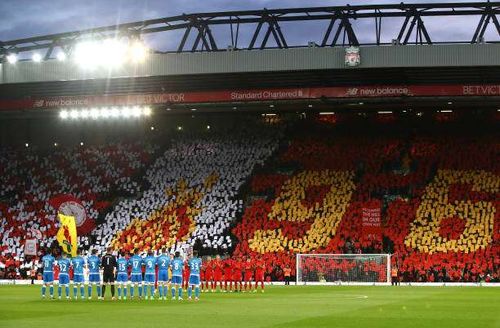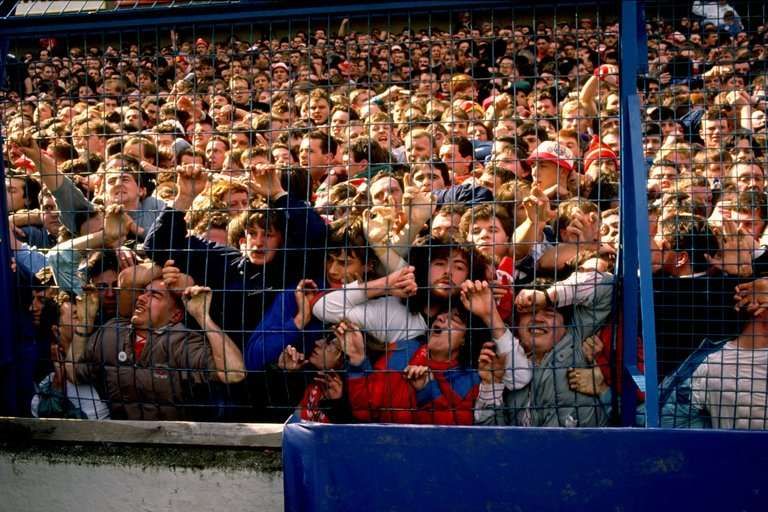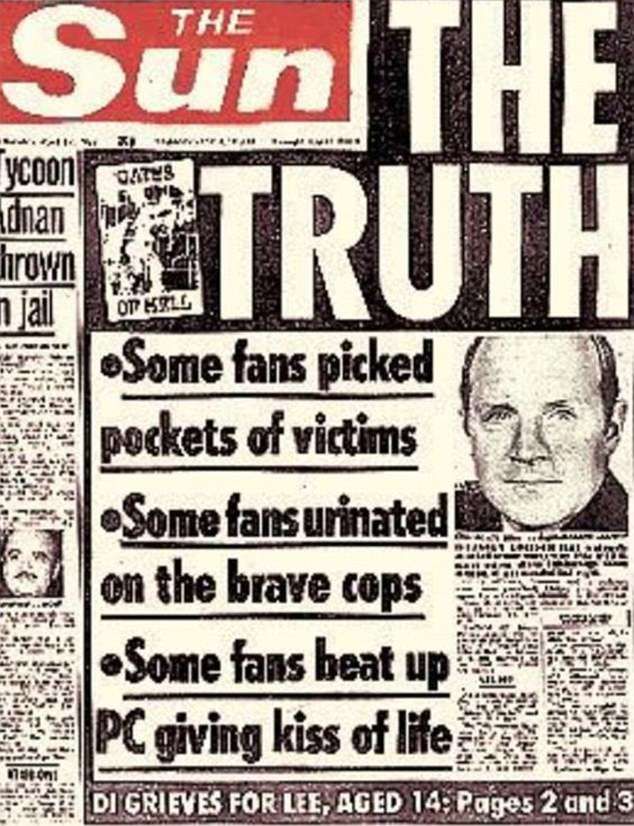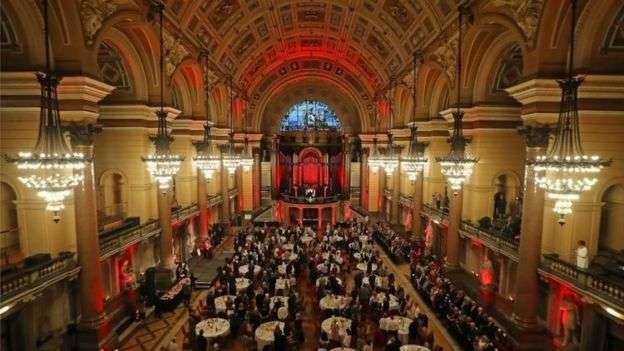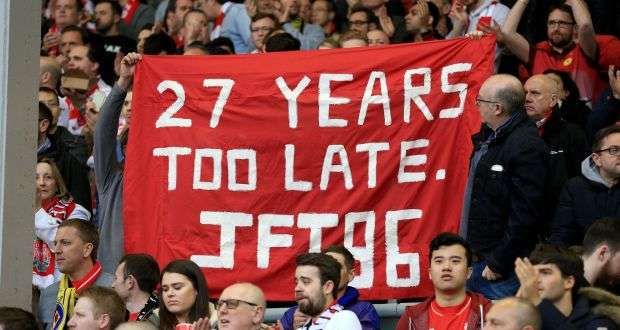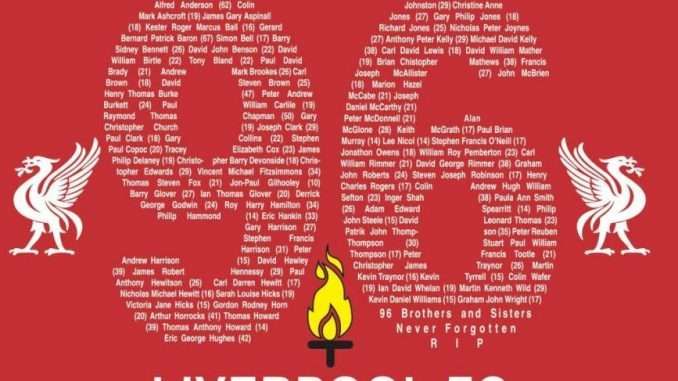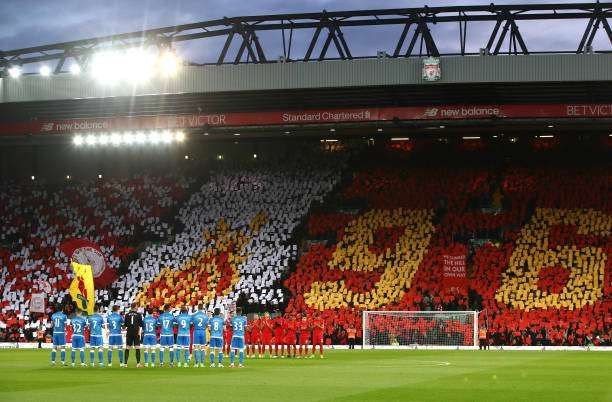
Hillsborough disaster: 28 years of living through British football's worst tragedy
Liverpool fans have always been known to wear their heart on their sleeve; it is, therefore, unsurprising that few non-Liverpool fans understand the explicitly significant emotions that Reds go through on a particular mid-April day. Fewer still comprehend the Reds’ disdain for Rupert Murdoch’s tabloid ‘The Sun’ and their boycott of said publication.
At a day and age where fan memories last for the duration of just one match-day in an era of instant gratification, it is difficult for a new generation to grasp the gravity of the events on that fateful day almost three decades ago.
However, it is important to know some parts of history; it is imperative that young Liverpool fans are initiated into the club through stories of Heysel and Hillsborough as much as the European cups and Istanbul. It is also crucial for rival fans to understand why it is absolutely NOT OK to ridicule the death of the 96 (or those of any other tragedy) in the name of banter.
The disaster
On 15th April, 1989, less than 5 minutes into the FA Cup semi-final game between Liverpool and Nottingham Forest – held at Sheffield Wednesday’s insecure, inadequate and safety-certificate-yet-to-be-updated stadium – authorities had to run onto the pitch to request the referee to stop the game, following incidents of fans falling off terraces, suffocation and general mayhem at the Leppings Lane end which was allocated to Liverpool fans.
A visit to a football stadium on a weekend afternoon should feature some banter, lots of chants and cheer, relentless support for the team you are rooting for, and either jubilation or disappointment at the end of the game followed by a round or two of drinks with your mates. That is all (besides the tumult of emotions that generally accompany the aftermath of a game, of course).
It is not a place where you head to, wondering if there could be a chance that you may not return at all. A game you head out for is when you least expect that sly, unwelcome guest – who comes calling at every one of our doors just once – death.
Twenty-eight years ago, in one of the most untoward incidents ever; and recorded as the most terrible occurrence in English football, 96 Liverpool supporters lost their lives due to a combination of negligence, apathy, inexperience, mismanagement and a delayed emergency response mechanism. The youngest victim was 10-year-old Jon-Paul Gilhooley – Steven Gerrard’s cousin. Additionally, close to 800 fans were injured in the chaos that preceded the game.
The 97th victim – a lesser-known fact
Survivor’s guilt claimed another life on 26th Feb, 2011 as Stephen Whittle jumped in front of a train to put an end to his life.
Twenty-two years prior, due to work commitments, Stephen had sold his ticket to a friend who was, unfortunately, one of the 96 killed at Hillsborough.
In his will, Whittle left £61,000 to the families of the victims of the tragedy.
The shock
What followed – quite unbelievably indeed – was worse than the disaster itself; instead of providing relief and support to the bereaved families, they were denied the dignity to even grieve in peace.
Authorities and ‘The Sun’ – abhorred and shunned in Merseyside since then – led a smear campaign to taint the ones who could no longer speak for themselves. The Sun ran a front-page news piece titled ‘The Truth’, wherein some of the fans who had passed away or were injured were blamed for hooliganism, drunken brawls and misbehaviour, and violating the privacy of fellow fans and police.
Therefore, instead of privately mourning their loss and paying the last respects to those departed, the near and dear were embroiled in an ugly fight with the law and order system to restore the self-respect of those would never wake again.
Shoddy investigations
Lord Justice Taylor’s preliminary investigative report in August 1989 described in detail, the risks at Sheffield’s stadium, the capacity constraints, the authorities’ mismanagement and the fans’ blamelessness.
However, this was followed by another round of inquests in 1990 which ruled the deaths to be accidental and lay the blame squarely at the feet of the fans for disorderly conduct at the stadium and misbehavior under the influence of alcohol, following the match being called off.
The families of the victims refused to give up and with the full support of the club, continued their relentless pursuit of justice. They had to fight on every front for a good 22 years before the ice finally began to thaw.
The breakthrough
Dec 20, 2012 saw the initial inquests being quashed by the High Court and two separate investigations being launched – one into the occurrence of the tragedy itself and the other, into police claims and pieces of evidence.
Finally, in April 2016, the death of the 96 fans was ruled ‘unlawful killing’, which could have been prevented by a variety of measures including but not limited to adequate manning of turnstiles, experienced supervision of entry and also the timely provision of emergency services.
It is cruel and shameful that only 14 of the 96 victims were ever admitted to hospital; the enquiry ruled that those accountable would be investigated and could have criminal charges pressed against them.
Not a win, just a consolation
Justice delayed is justice denied – William Ewart Gladstone, former British Prime Minister
The families of the 96 victims fought on for their loved ones and spent their lives trying to gain a semblance of justice. It took a toll on their health, emotions, mental well-being and personal lives, but they carried on nevertheless.
What they finally achieved is of immense relief and satisfaction, and credit is due to them. However, there is no denying that a system completely failed its people and left a bitter taste forever in the minds of the families with regards to the ideas and execution of justice.
The latest ruling is, therefore, merely a consolation and tremendously delayed justice for the affected families.
Gone but never forgotten
Hillsborough memorial is observed by the club, players and Reds fans every year in memory of the 96 who lost their lives prematurely and unexpectedly. There is never a need to remember those who are never forgotten and the 96 are in our thoughts forever.
They may no longer be with us in flesh and blood but their spirit continues to guide us and shows us light in the form of the eternal flames etched on the club crest.
There have been many occasions where Liverpool have come back from seemingly impossible circumstances to win their matches in and around the date of the memorial, including but not limited to last year’s thrilling see-saw win over Borussia Dortmund at Anfield.
Also read: What Hillsborough Means To A Liverpool Fan
It could simply be a consequence of the emotion-charged atmosphere both within the dressing room and around the stadium; it could also be something more than just human.
Also, a key outcome of the disaster was the introduction of all-seater stadiums across England as per one of the earliest recommendations of the Taylor report. The 96 may have left us but even in death, they ensured the safety of fans in the future.
